Kathmandu Valley In 3 Days, we will include the must-visit places inside Kathmandu Valley which make your stay memorable and worthwhile. The places we mention will help the tourist to get the most out of Kathmandu Valley in their 3-day stay.
Kathmandu Valley In 3 Days, we will include the must-visit places inside Kathmandu Valley which make your stay memorable and worthwhile. The places we mention will help the tourist to get the most out of Kathmandu Valley in their 3-day stay.
An open museum, as they say, Kathmandu is undoubtedly a perfect destination for someone who wants to escape the mundane. From vibrant festivals and delicious local cuisines to UNESCO-enlisted sites and splendid sunrise views, there is nothing the city will not offer you. Among hundreds of attractions that the city holds, there are a few that you must visit during your trip to get a better understanding of the country and people living here.
In this blog, A Must-visit Tourist Place in Kathmandu in 3 Days, we will take you on a journey of Kathmandu's most iconic landmarks providing an overview of city's rich history and cultural significance with its stunning Himalayan views. Over three days, we'll explore the must-visit sites that show Nepal's Heritage and stunning views. From Ancient temples to vibrant markets, get ready for an unforgettable experience in this enticing city.
|
Day 1: Attractions |
| ✅ Swayambhunath |
| ✅ Pasupatinath Temple |
| ✅ Boudhanath |
| ✅ Kathmandu Durbar Square |
Highlights of Swayambhunath:
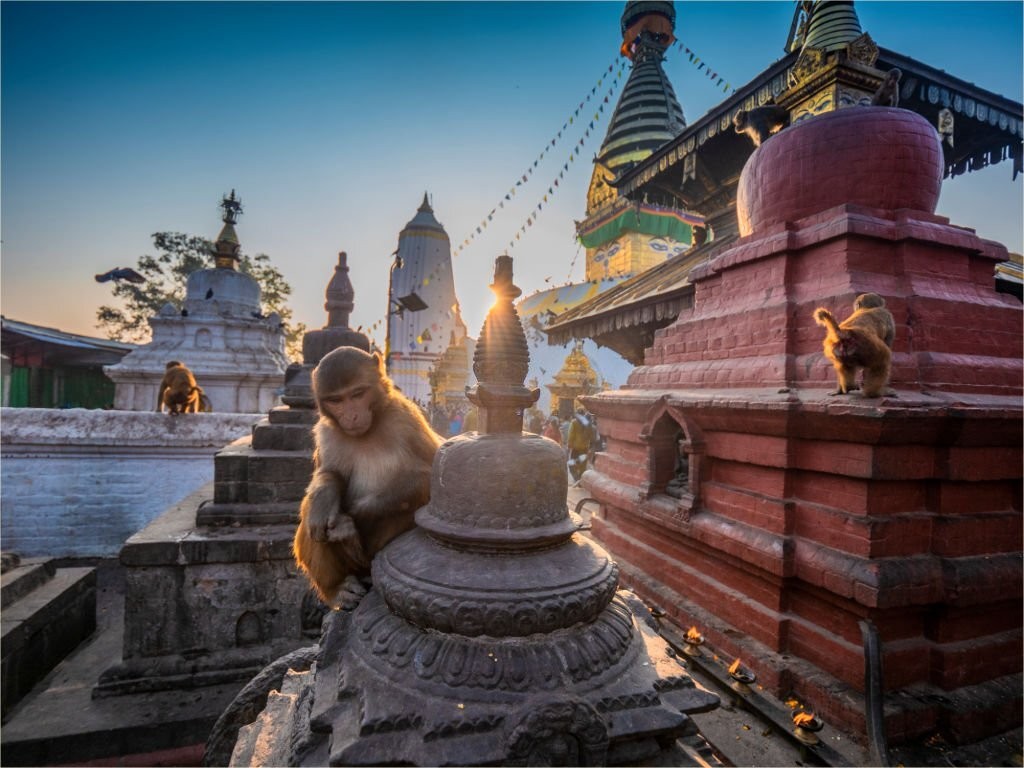
Swyambhunath is the most ancient and enigmatic holy shrine, settled atop a hill in the northwest part of the Kathmandu valley. It is one of the must-visit sightseeing places in Kathmandu. Dedicated to Buddha, the Swayambhunath Stupa is believed to be self-sprung from a lotus flower before 460 AD. However, the site became an important center of Buddhism only in the 13th century. Since then, Hindus, Vajrayana Buddhists, and Newari Buddhists have visited to pay homage to Buddha.
The main stupa of Swayambhunath consists of a dome at the base, a cube structure with three eyes, and the Nepali number 1 looking in all four directions. Above the cube are thirteen tiers and a Gajur (Spire). Here the white dome represents the world, the pair of eyes represent wisdom and compassion, also known as Buddha's eyes, and the third eye above each eye is said to emanate cosmic rays when Buddha Preaches. And lastly, the 13 tiers symbolize the thirteen stages of the spiritual realization of Buddhahood.
Apart from the unique structure, the location is also one of the major attractions of Swayambhunath. The placement of Swayambhunath atop the hill makes it visible from different corners of the city, and you can enjoy a 360 panorama of the city from the hill. Around the stupa are Harati Temple, Peace Pond, Dewa Dharma Monastery, and Saraswati Temple. You can stroll around the stupa and enjoy the sights as monkeys accompany you.
Highlights of Pashupatinath Temple:
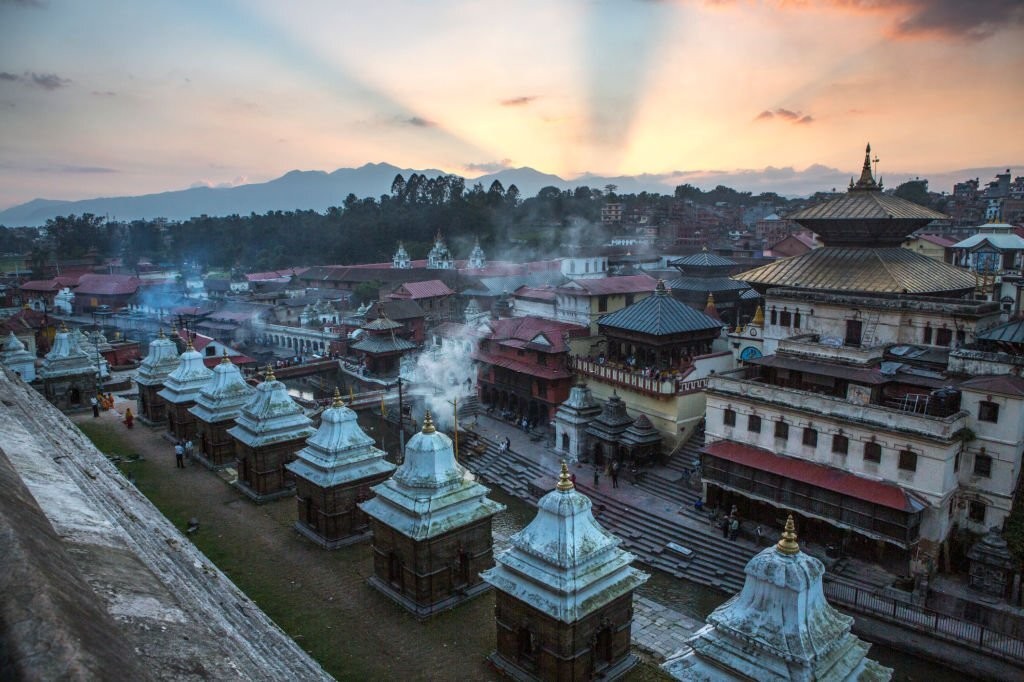
Dedicated to Lord Shiva, Pashupatinath Temple is one of the important Hindu pilgrimage sites settling at the eastern side of Kathmandu valley, on the bank of the Bagmati River.
Built in pagoda style, the temple has a copper roof covered with gold covering and homes the main idol of Shiva. The stone idol has a Mukhalinga with a silver yoni base bound with a silver serpent. The idol is a meter high and faces in four directions, representing various aspects of Shiva. Just in front of the main temple is an enormous golden statue of Nandi – Shiva’s bull, which adds beauty to the whole area.
Apart from the main complex, the temple has an inner and outer courtyard with several temples dedicated to different deities. On your trip to Pashupatinath temple, you will discover the background of the temple along with the open-air cremation rituals of Hindus on the bank of the River.
Things to do in Boudhanath:
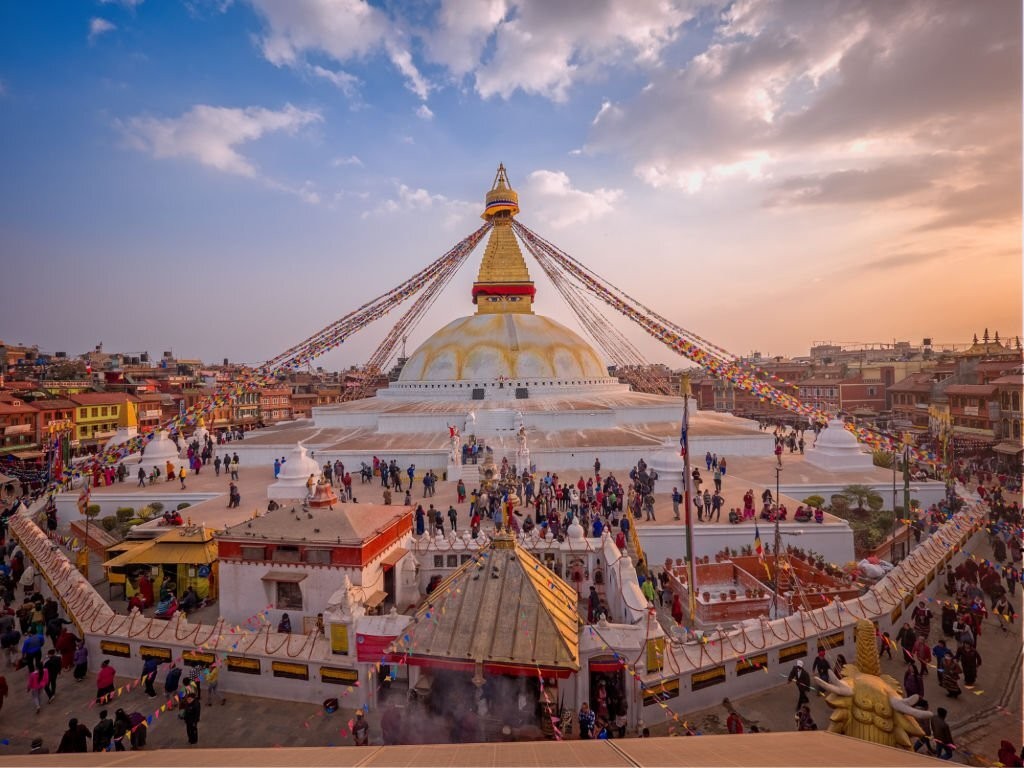
Dedicated to Buddha, Boudhanath is located on the northeastern outskirts of Kathmandu and is one of the most famous places in Kathmandu visited places by all religions. The massive mandala-shaped structure replicates that of Swayambhunath and makes it one of the largest spherical stupas in Nepal. The 36m tall layout consists of a giant dome, on the top of which sits a Buddhist pyramid tower, along with the eyes and Nepali number 1 on all sides. The pyramid tower signifies 13 tiers of enlightenment, eyes represent compassion and wisdom and the Nepali number 1 means unity.
What makes the site a fascinating place to visit is the mythology describing the reason behind the construction of the stupa. Some believe it was built in the 4th century by Manadeva following his father's death. Another mythology elaborates on how Jadzima and her four sons built the stupa that entombs the remains of Kasyapa Buddha. Our guide will narrate the whole incident to you during the visit.
Around the stupa are shops selling unique souvenirs and local cuisines. Since most of the inhabitants are Tibetan, the place is also popularly known as small Tibet. On your visit, do get all the stories and eat delicious food.
Major Highlights:
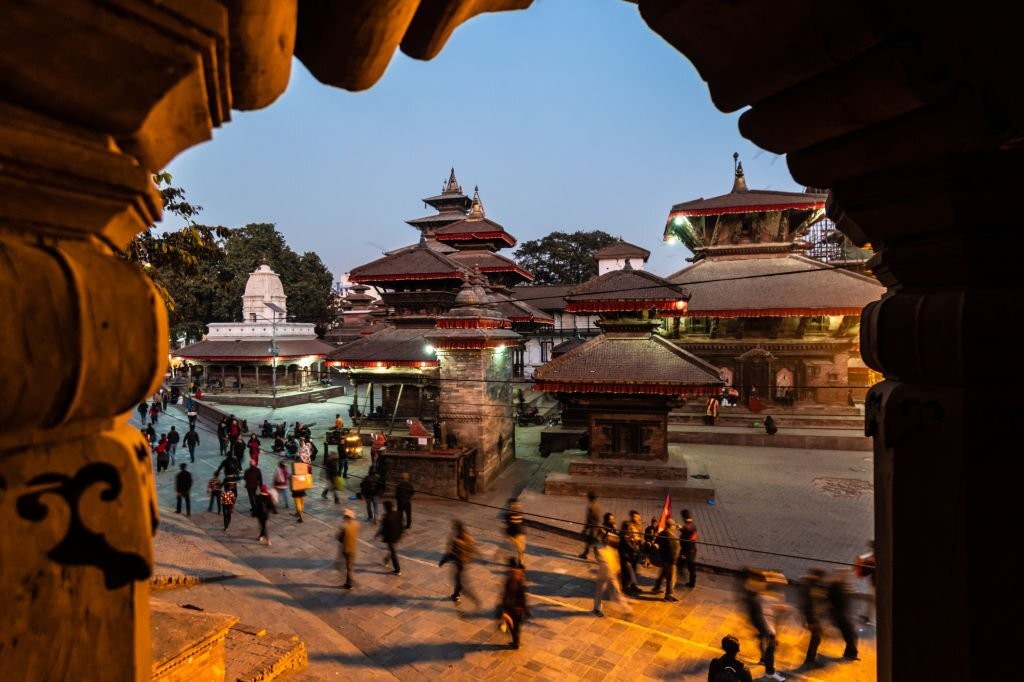
Kathmandu Durbar Square is one of three royal palaces in the Kathmandu Valley. The Durbar Square is locally known as Hanuman Dhoka Palace or Basantapur Durbar Square and is located in the heart of Kathmandu Valley. The Durbar square dates back to the Licchavi period in the third century. However, they have gone through multiple renovations, keeping the old architecture alive.
The Durbar Square has two complexes, outer and inner. The outer courtyard houses interesting temples like Kumari Ghar, Kasthamandap, Shiv-Parbati Temple, Jagannath Temple, Big Bell, etc. The inner complex comprises the old palace area, which has been converted into a museum, Hanuman-dhoka, and its courtyards as Nasal Choke, Mul Choke, Sundari Choke, Basantapur Durbar, and others.
Apart from the magnificent temples and shrines, it has other interesting aspects like festivals, carnivals, and cultural activities that give life to the area. The major festivals include Indrajatra, Dashain, Gaaijatra, and Machchhindranath Jatra. People from all religious backgrounds gather and follow century-old traditions during the festival..
Some of the major attractions of the Durbar Square area are:
✔ TALEJU TEMPLE:
Built by King Mahendra Malla in 1549 AD, Taleju Temple is the tallest of all structures in the Durbar Square area and is opened to the public once a year during the Dashain festival.
✔ KUMARI GHAR:
Kumari Ghar is the official residence of the Living Goddess Kumari of Kathmandu and a perfect example of architectural beauty. During the special hours, visitors can visit and seek blessings from the goddess.
✔ KAL BHAIRAB:
Kal Bhairav is one of the epic 17th-century stone statues in Kathmandu that showcases the terrifying aspect of Lord Shiva.
✔ Gaddi Baithak:
Gaddi Baithak is one of the major attractions of Kathmandu Durbar Square. Influenced by European style, the Baithak is covered in white plaster and is polished by Nepali architecture. The main highlight is the balcony of the baithak that is reserved for VIPs of Nepal to see and enjoy festivals like Indrajatra.
✔ Hanuman Dhoka museum:
Also known as the Tribhuvan Museum, the Hanuman Dhoka Museum is another important historical site housing the king's bedroom, personal belongings, century-old photographs, and many more.
|
Day 2: Attractions |
| ✅ Patan Durbar Square |
| ✅ Bhaktapur Durbar Square |
| ✅ Nagarkot |
Highlights of Patan Durbar Square:
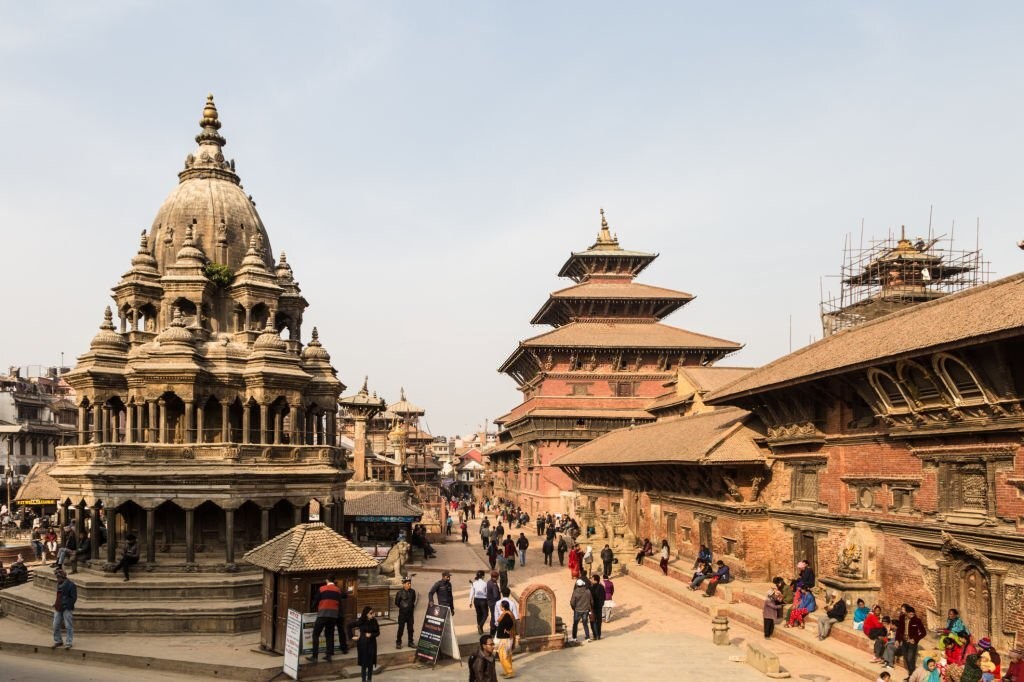
Patan Durbar Square is located in the southern part of Nepal and is known for its fine arts and architectural details. The square is believed to date back to the 16th century and is filled with temples, monuments, shrines, and immaculate courtyards. There are 136 courtyards and 55 temples in the area and hence is considered the centre of Hinduism and Buddhism. Most of the structures in the Durbar complex are made in Shikhara architecture using stones and wood. The carvings on almost all of the attractions are unique and depict stories and figures of deities.
Some of the major attractions of Patan Durbar Square are:
✔ Krishna Mandir:
Krishna Mandir is one of the crucial structures of the square dedicated to the Hindu Lord Krishna. Built in Shikhara style, the temple has stone carvings illustrating the scenes of Mahabharat and Ramayan, Hindu epics. Inside the temple are shrines dedicated to Lord Krishna, Rukmani, and Radha on the first floor and Lord Shiva and Lokeshwor on the second floor. Every year on Krishna Janmashtami, people visit the temple to worship Lord Krishna.
✔ Golden Temple:
Golden Temple is a Buddhist monastery courtyard adorned with golden structures and décor. The temple dates back to the 12th century and is one of the oldest structures of the Durbar complex.
✔ Patan Museum:
Located inside Keshav Narayan Chowk, the Patan Museum holds many religious statues of bronze and gilt copper. The museum is known for preserving other different metalworks, woodworks, photos, and information that date back centuries.
✔ Bhimsen Temple:
Bhimsen temple is different from other temple present inside the Durbar Complex. The main highlight is the rectangular structure plan of the temple. Dedicated to lord Bhimsen, the temple was built by King Srinivasa Malla in 1680.
Highlights of Bhaktapur Durbar Square:
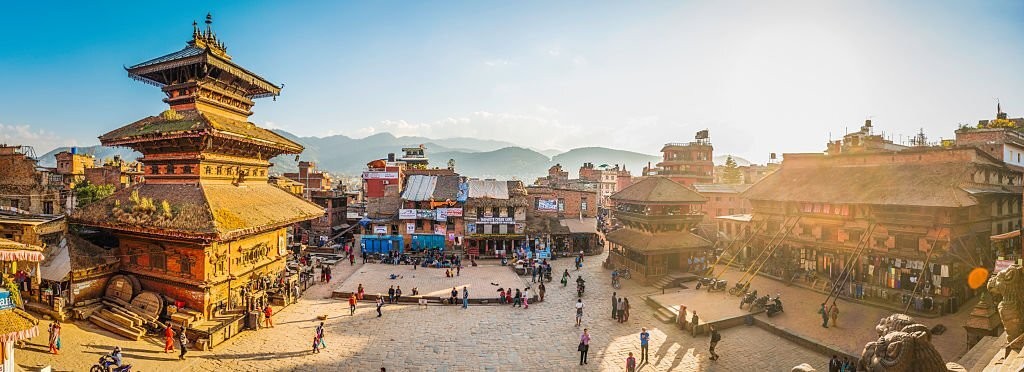
Renowned as a museum of medieval art and architecture, Bhaktapur Durbar Square is another important tourist site in Bhaktapur. The colossal temples, intricated wood carvings, and sculpture make durbar square a must-visit place to enjoy the magnificent artwork of the Newari community. Inside the complex are four distinct squares, Durbar Square, Taumadhi Square, Dattatreya Square, and Pottery Square, each having a unique attraction.
Major attractions of Bhaktapur Durbar Square are:
✔ 55 Windows Palace:
Built by King Bhupatindra Malla and completed by Jaya Ranjit Malla in 1754, the 55 windows palace is a masterpiece of woodwork and carvings. It is not open to visitors. However, you can admire the artwork from the outside.
✔ Nyatapola Temple:
The 30m-high, Nyatapola temple is one of the tallest temples in Nepal. This five-storied temple was built by King Bhupatindra Malla and is dedicated to Goddess Siddhi Laxmi and is not open to the public.
✔ Golden Gate:
Also known locally as Lu Dhowka, the Golden Gate is one of the most intricately decorated gates you will see during your visit to Nepal. There are carvings of Goddess Taleju and Garuda on the gate.
✔ Pottery Square:
Pottery Square is gaining a lot of popularity among locals and international visitors. The open courtyard of Pottery Square is filled with earthen clay pots. You can watch potters working on the pottery wheels and try your hands on pottery.
Highlights of Nagarkot:
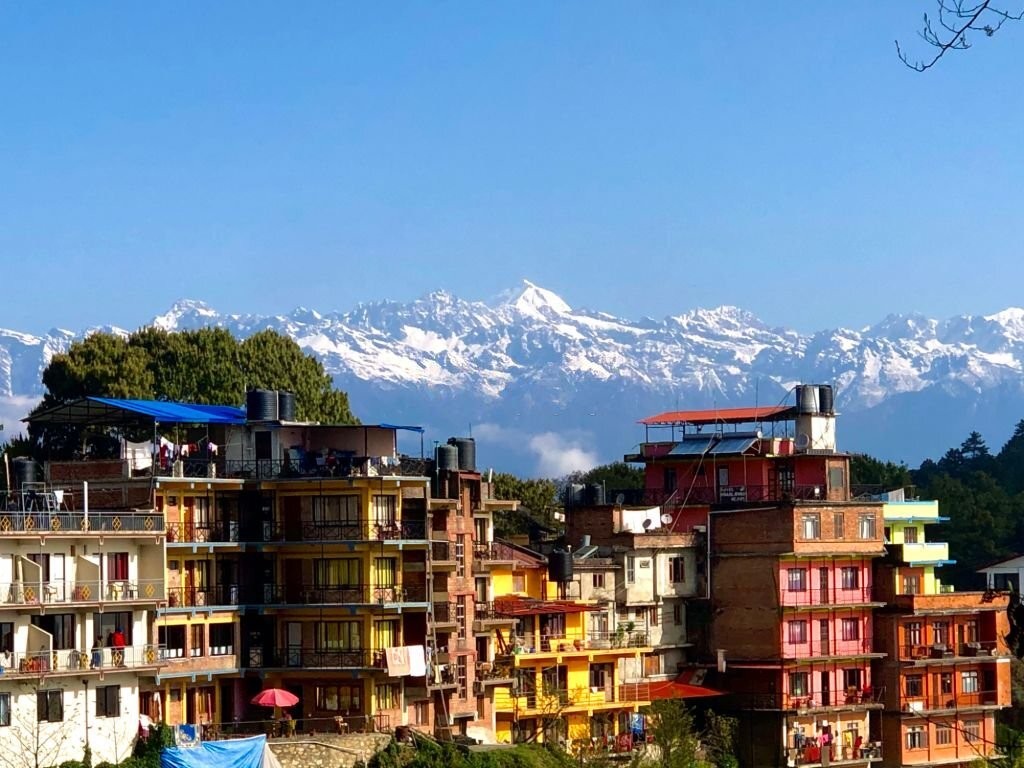
Nagarkot is a popular hill station located just 32km west of Kathmandu. Settled at a hill at an altitude of 2195m, Nagarkot is famous for sunrise/sunset views and panorama of Everest, Annapurna, Langtang, Ganesh, and Manaslu ranges.
The proximity to the city and the scenic beauty make Nagarkot a popular hiking and biking destination for tourists. For nature lovers and outdoor enthusiasts, Nagarkot offers a wide range of hiking opportunities like the Buddha Peace Park hike, Nagarkot-Changunarayan hike, and Nagarkot-Chisapani hike are the popular hiking trails of the region.
Day 3: Attractions |
| ✅ Changunarayan Temple |
| ✅ Narayanhiti Palace |
| ✅ Garden of dreams |
| ✅ Stroll down the streets of Thamel |
Dedicated to Lord Vishnu, Changu Narayan Temple is the oldest temple in Nepal that is built in a traditional Nepali style. The temple is believed to be one of the oldest temples in Nepal. On the premises are the idol of Vishnu and smaller shrines like ChinnaMasta temple, Badeshwar Mahadev, Laxmi Narayan, and Kileshwor Mahadev temple. The main complex and other temples of the Changu Narayan preserve the history of the Licchavi dynasty to the present date.
The former royal palace of Nepal, Narayanhiti Museum, carries major historical events of Nepal, from the heartbreaking royal massacre to the establishment of democratic Nepal. The palace comprising 52 rooms named after different districts of Nepal, was opened to the general public in 2009.
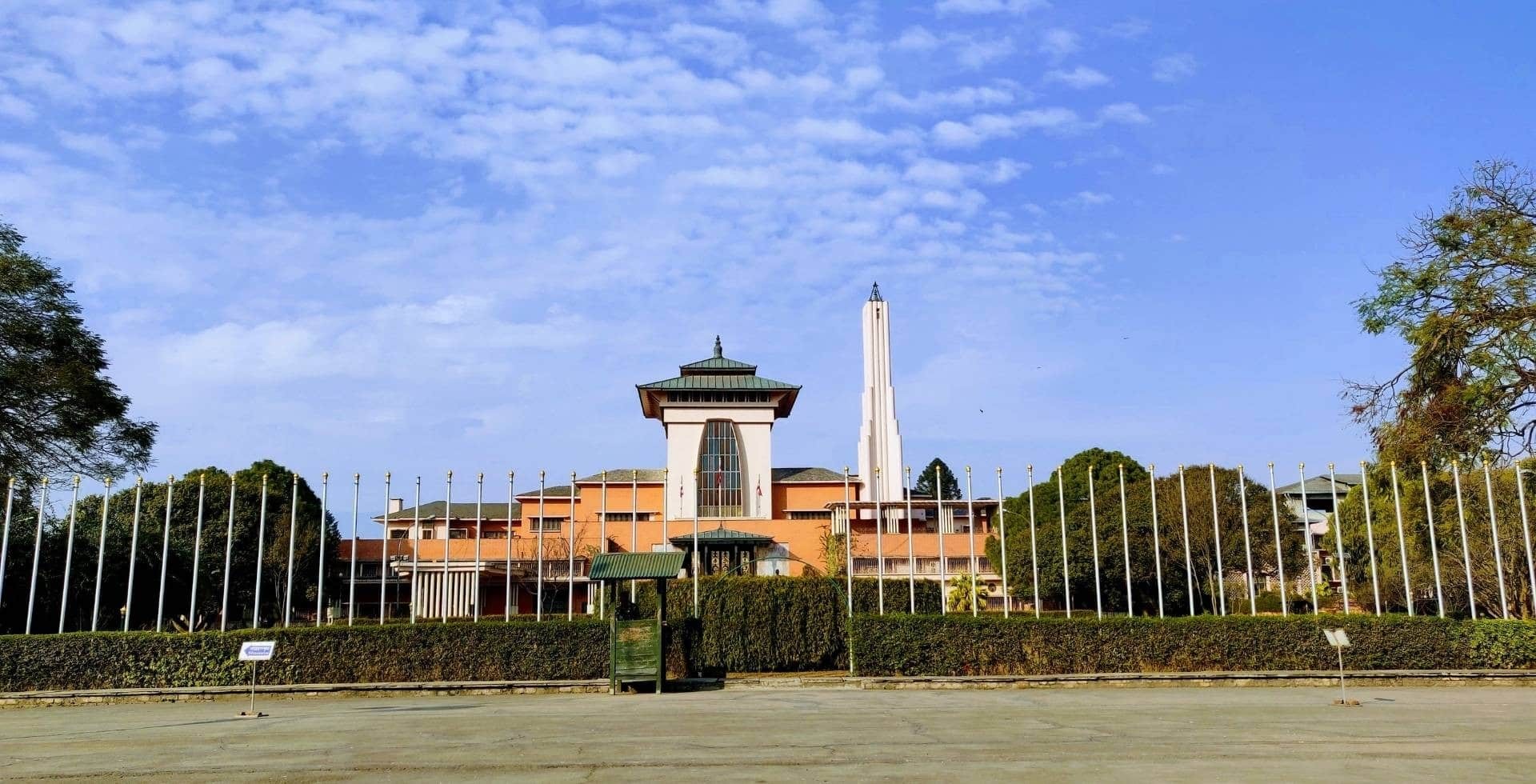
The main attractions of Narayanhiti Palace Museum are:
✔ Kaski Room:
This is one of the prime rooms of the palace where important ceremonies like welcoming foreign heads of state during their Nepal visit and swearing ceremonies of different constitutional organs took place.
✔ Myagdi Room:
In this room, the constitutional organs and other ambassadors were given refreshments.
✔ Rukum Room:
The room was used as a waiting room for visitors like foreign heads of state.
✔ Mugu Room:
The mugu room is another main room where different items used by King Tribhuvan are included.
✔Dailekh, Baitadi and Achham Rooms:
The Dailekh, Baitadai, and Accham rooms were booked for foreign president and their relatives. The foreign president slept in the Dailekh room, his wife in the Baitadi room, and his close relatives stayed in the Achham rooms.
✔ Dhading and Dhankuta rooms:
The Dhading chamber was the former King's resting room, and Dhankuta was the King's bed.
Located just a few minutes' walk from Thamel, Garden of Dreams is a historical garden of Nepal. Built as a private garden by Kaiser Shamsher, a high-ranking Rana Field Marshal in the 20th century, it has a beautiful ambiance adorned with fountains, ponds, and a pavilion making it a Garden of dreams, as the name suggests. It is also renowned as the garden of six seasons, Spring, Summer, Monsoon, Autumn, Late Autumn, and Winter. The six pavilions are dedicated to each of these seasons.
The plenty of green spaces, surroundings, and blossoming flowers make it a perfect place to relax after days of tours and trekking in Nepal.
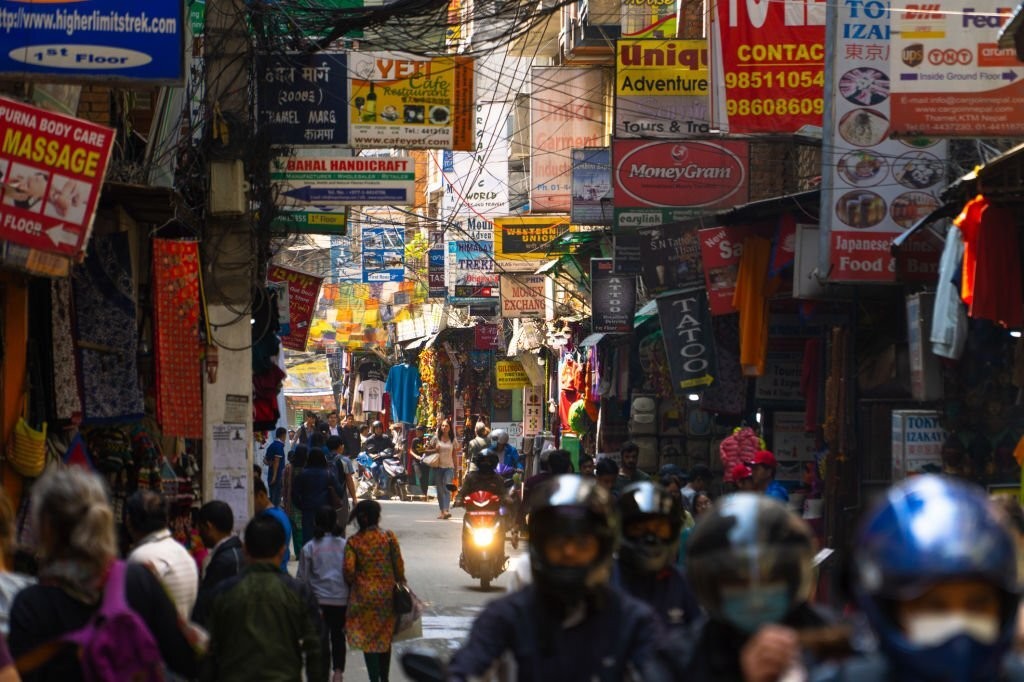
Well, it is quite obvious to stroll down the streets of Thamel before ending your holiday. From buying souvenirs to getting massages and enjoying the nightlife, Thamel offers a variety of activities for visitors.
The shop in Thamel sells handicrafts, tea, spices, Pashmina Shawls, and many other items you can take with you to reminisce about your good times in Nepal. In case, you have not been able to eat the local cuisines during the tour, do visit the local restaurants and savor delicious food items. If you love live music, there are plenty of pubs and cafes around Thamel playing live. Cultural dinner is another experience you can add to your to-do things, as you can enjoy the cultural dance show while you dine.
The details mentioned above only give you a fraction of the information about the famous attractions of Nepal. There is a lot more to explore about these places, so do plan a short visit to Nepal and visit these places to gain more insights into the life, culture, tradition, and history of the Nepalese.
▪ 6 Things not to Miss while you are in Nepal
▪ Best Streets Foods in Kathmandu you can’t miss out
▪ Short Trekking Destination in Nepal